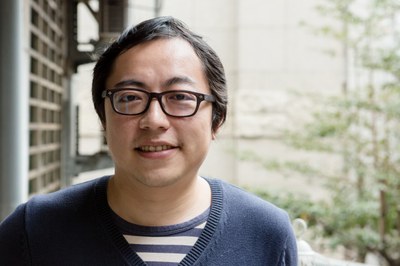
《回莫村》
許家維
首展日期|2016/07/30 - 2016/09/25
首展地點|鳳甲美術館
第15屆台新藝術獎年度大獎 得獎理由
《回莫村》以強烈的人文關注和跨文化特質,探討冷戰時期國際政治角力下,泰緬邊界一段歷史秘辛與一群被遺忘的人,並置了此地與他方、真實與虛擬,形成一個充滿魅力的複雜文本。
許家維長期關注地緣政治,以不同座標映射台灣歷史的外圍。《回莫村》以局外人角度與當事人合作,他們既是自白者,也是被訴說的對象,使當事者與觀者懸置於不可能的回歸。作品成功地融合了紀錄片、偶戲、舞蹈、文學、歷史與田調等複雜元素,形構豐富語彙,打開觀眾對事件的理解與想像,令人動容。
入圍理由
相較於許家維過去的作品——諸如透過年長女性溫潤的外語旁白以貫穿歷史與記憶的《和平島故事》(2008),抑或透過民間信仰方式以替代藝術家主權的「鐵甲元帥」系列(2013-2014),在許家維2016年於鳳甲美術館的個展「回莫村」中,一方面,敘事主軸雖仍纏繞於亞洲自上個世紀中葉以來伴隨著無盡戰事的歷史空缺,卻也讓我們看見更多的後設佈局,這些佈局不僅讓觀眾的目光難以從這些看似無關乎敘事情節的過場程序中移開,同時也觸發了觀眾關於歷史空缺的問題意識:究竟是誰在敘述?被敘述的誰又何以與敘述者產生區別?他人的歷史何以成為我們的歷史?(主筆/簡子傑)
關於《回莫村》
許家維的錄影和裝置構建起關於亞洲地理、歷史與文化領域的敏感視覺敘事,在密集而複雜的多重文化與歷史中,藝術家揭示了現代人的生活是如何被根本轉變的。從2012年迄今,許家維的回莫村計劃持續發展了5年的時間。他的創作經常是以「地方」做為著力點,進一部挖掘隱含在其中的記憶與認同。這個計劃同樣延續這個實踐方式,但同時也擴延至更大的亞洲區域性問題,例如殖民與冷戰歷史。 本次總共展出四件作品,其中兩件為2015年的創作,首次在台灣發表,包括錄像作品《廢墟情報局》以及裝置作品《情報局紀念所》。另外兩件作品則是圍繞同一主題的作品,包括2012年所創作的錄像作品《回莫村》,以及2013年的裝置作品《回莫村-國防部1920區光武部隊大陸工作組》。
關於人物
許家維《回莫村計畫》講述1949年後,一批撤退泰緬邊境的國民黨軍隊,在分裂歷史陰影下的倖存者,在多重軍政勢力的交錯下,不被認可的身份及邊境孤軍的故事。泰北地區與亞洲近代史有著錯綜複雜的關係,許家維透過實地探訪,展開長期與當地居民的合作計畫;一系列創作呈現邊境多重文化的敘事,將考掘歷史的過程化為當下的行動,並串連個人歷史與地方脈絡,讓當事人得以現身,並且有自我闡述的可能。
2010年,許家維於紐約駐村時認識一對泰國藝術家,感嘆於台灣和泰國都位於東南亞,卻總在歐美大城市才有機會認識彼此,甚至連譯名也常被搞混,於是共同計畫建立一個管道或平台,讓兩地甚至東南亞藝術家能直接交流。剛好當時許家維跟其他藝術家合辦的「打開當代藝術工作站」租約到期,考量房價後決定把藝術空間搬到曼谷一年,爾後,他在曼谷聽當地人說泰北有個講中文的村落,上網一查,原來是國共內戰,國民黨敗退的孤軍。這幫孤軍從雲南一路南遷到緬甸,因國民黨軍火較緬甸軍先進,緬甸政府無力收拾,便先畫地安置再請聯合國調停,聯合國認定孤軍強佔土地,要求他們離開緬甸,但在台灣的國民黨政府則堅持反攻大陸須海陸並進,要求他們留在當地北上反攻,於是孤軍遷至泰北待命,數十年過去,不曾離去。
許家維查資料時讀到柏楊小說《異域》,便到泰北把書中場景走一遍,碰巧有位朋友剛從泰北擔任志工回來,引薦他認識回莫村的田牧師。回莫村所在地區是八零年代海洛因的盛產地,許多人因毒品糾紛遇害或服刑,留下的孩子便住進田牧師創辦的孤兒院「自強之家」。他說,「本來我抱著重返書中場景的念頭前往,卻在認識田牧師後把作品計畫全然推翻。我無法攤開地圖隨便挑個地方走馬看花,一定要帶著想像或創作設定前往;即使我的想像是錯的,設定是粗糙的,但透過創作這個行為的開啟對話,彼此便能有所溝通」。創作歷程總是充滿巧合,許家維堅持實地田調,面對面蒐羅個人史,他說,「人都活在大時代裡,但並非所有人都時時刻刻在處理大問題。我創作的核心概念是主觀的現實主義—沒有事情是客觀存在的,所有歷史書寫都主觀。」
許家維關注臺灣之於亞洲的各種脈絡糾纏,無論聚焦於本島或遠至島外的創作,他總是關注那些常人所忽略的異境邊疆、國族與文化認同的模糊地帶。比如在基隆和平島造船廠的拍攝,透過阿媽之口講述日治時期殖民統治事蹟的《和平島故事》;《神靈的書寫》探討馬祖鐵甲元帥之信仰與國族的關聯;《花東新村》則在述說汐止山區阿美族大型部落,因高鐵建設而被迫遷村的故事。他認為,「臺灣近代發展並不單指這座島上的事,不曾經歷日治時期的馬祖、泰北遠方的孤軍、汐止過去的阿美部落,彼此牽引出各種錯縱複雜的時空脈絡」。這裡有不同政權創造不同版本的歷史觀點,沒有正確答案也沒有絕對標準,因為「歷史不斷流變,只能凸顯差異。無論認同或記憶,只能描繪輪廓,無法直接定義;而我的作品常在各種邊境進行,雖然許多時刻都是巧合牽引,但當我深入挖掘,總會發現原來時代之下,所有事情環環相扣」。
許家維尤其注重「拍攝」這行動被建構出來的過程,企圖呈現多層敘事的脈絡;劇情可能虛構,但當大家聚集某地拍某部影片時,這件事真實發生。他並非要呈現少見的景致或懷舊情思,而是企圖讓觀者見到拍攝現場被建構的過程,讓媒材交相呼應,模糊了劇情與記錄的界線,也刺激觀眾反思。許家維常被問及作品是否有實質幫助回莫村?他的回答是:「藝術介入社區或社會,有時聽起來好像是要用藝術去幫助社會,解除危機,但藝術有這麼重要嗎?當事人會去美術館看以他們為主題的展覽,討論美學意義嗎?在這些不同計畫裡,共同的是我藉由『生產創作』這個行為跟人們對話,在過程中得到很多收穫;我期許透過展覽,把收穫傳達給沒去過那些地方的人」。

許家維
1983出生於台中,現生活與工作於台灣台北,許家維對於亞洲冷戰時期被遺忘的歷史有著濃厚的研究興趣,作品發展出對於探究現實與幻象、歷史與當下間的敏銳知性,並透過建立鏡頭以外的事件,連結正規歷史描述所未及的人與地方的關係。他不斷的嘗試融合當代藝術與電影的語言去發展作品,並關注於如何透過影像創作介入現實,進而生產一種介於敘事世界與現實之間的異質敘事體。同時透過一種批判的態度,透過影像的能力,將場域帶到美術館外任何一個地方,作為影像創作在政治實踐上的可能。
作品相關評論
神意調度與哈努曼: 談「回莫村:許家維個展」─ARTALKS 2016/09/02
泛起泛止談/彈許家維作品中的泛音敘事─典藏今藝術第289期
製作團隊
藝術家|許家維
《廢墟情報局》
製片│Le Fresnoy - Studio national des arts contemporains 牧師│Atthaphon Sae Thian
老兵│Li Yong-Qing、He Yi-Xiang、Ai Lai、Ni Wu、He Shi-He、Ai Kua、Wang Bo-Jun、Wang De-Xin、Zhong Shan、Li Guang-Rong、Li Yi-Ming、Zhao Zhong、Zhao Lao-Da、Ai Weng、Ai Huai-Ming、Wang Zhong、Zhang A-Mei、Zhang Yong-Qing、Wei Jia-Ming、Li Da Kum Nai
泰國木偶劇團│Noppadol Honglilikul、Kheewat SangSaun、Den Halert、Theeraphan Khamlai
樂師│Chumpol Khunyotying、Wasan Bai-Ngew、Piboonsak Vijittraka、Thaworn Hassadee、Witthaya Malathong、Khamron Suksai、Kiatthisak Phosiri
製片經理(泰國)│Soifa Saenkhamkon
製片助理│張博涵 木偶劇團經理│Sasipimol Phajorntis 副導演│Kaensan Rattanasomrerk
攝影師│Kaensan Rattanasomrerk
攝影助理│Vijaktre Thirapatana 攝影操作員│Patcharapol Kongphetsak 場記│Thanakan Simaprasan
換片員│Prasong Kespanich 燈光師│Kumjorn Sankwan 錄音師│Sarawuth Panta、Sorayos prapapan
收音員│Choosak Nachaiwes 靜態攝影師│Anupong Chareonmitr 第一推軌員│Kumjorn Sankwan
第二推軌員│Anek Phusansaard、Nipon Phukrongpa 剪接師│許家維
聲音剪接師│Christian Cartier、Geoffrey Durcak 混音師│Christian Cartier、Geoffrey Durcak
擬音師│Geoffrey Durcak 調光師│Etalonnage Baptiste Evrard 特效製作│莊定一
英文翻譯│李曉瑋 法文翻譯│Rafaël Poiret
製作群│Le Fresnoy - Studio national des arts contemporains 總監│Alain Fleischer
電影與視覺部門經理│François Bonenfant 藝術指導│Manon de Boer 製片主任│Jacky Lautem
製作經理│Amélie Dubois Rehn 行政經理│Stéphanie Robin 技術總監│Pascal Buteaux
影像部門│Olivier Anselot、 Aurélie Brouet、Jean-René Lorand 聲音部門│Blandine Tourneux
後期影像部門│David Chantreau、François Lescieux
器材支援│Le Fresnoy - Studio national des arts contemporains、RED SNAPPER、Kantana Sound Studio
《廢墟情報局》
建築設計│引埠設計有限公司、林泓宇、陳佑中
基地模型製作│黃祥瑋、林汶葦、戴良諭
剖面模型製作│Digital AIEOU、黃凱琪、李明翰
手繪圖│陳佑中、張舜翔
英文翻譯│李曉瑋
製作協力│Huay Mor checkpoint station of 2nd cavalry regiment task force
《回莫村》
牧師│Atthaphon Sae Thian
製作協力│回莫村自強之家
副導演│Kaensan Rattanasomrerk
收音│Siwakorn Tesabamrung
技術總監│Kumjorn Sankwa
字幕翻譯│劉宥宜、李曉瑋
《回莫村-國防部1920區光武部隊大陸工作組》
參與老兵│Atthaphon Sae Thian、He Yi-Xiang、He Shi-He、Sang Luan
製作協力│回莫村自強之家
技術總監│陳淇榜
--------------------------------------------------------------------------------------------------------------------------------------------------------
Huai Mo Village
Chia-Wei HSU
Jury's Comment for the 15th Grand Prize Winner
Huai Mo Village is awarded the grand prize for its artistry, its strong humanitarian concern and cross-cultural features, juxtaposing this place and the other place, reality and virtuality.
HSU Chia Wei creates an engaging, complex universe that opens up understanding and imagination of geopolitical events, with their continuing ramifications on human beings through time.
Huai Mo Village discusses a secret history and forgotten people resulting from the political struggles of the Cold War, at the border of Thailand and Myanmar. The project rigorously integrates documentary, puppetry, dance, literature, history, and field research, which form the rich vocabulary of the artwork.
HSU, who is an outsider in this context, collaborates with the protagonists to collectively author their narrative. The protagonists are confessors and interrogators, with the viewers being suspended in an impossible return.
Comments from Nomination Committee
Comparing to HSU Chia-Wei's previous works - whether it is The Story of Hoping Island (2008), which features history and memory told through an elderly female voice in a foreign tongue, or the series of Marshal Tie Jia (2013-2014) that replaces the artist's subject with folk religion - although the main narrative of HSU's solo exhibition at Hong Gah Museum in 2016, Huai Mo Village, still centers on Asia's historical absence informed by countless warfare throughout the middle of the last century. However, it also reveals more meta-strategies, which have caught the audience's eyes with those seemingly irrelevant transitions in the narratives and plots while triggering their problematics about the historical absence. Who exactly is providing the narrative? How could we distinguish the narrated from the narrator? How can the history of others become our history? (Commentator: JIAN Tzu-Chieh)
About the Artwork
HSU Chia-Wei creates videos and installations to build perceptive visual narratives about geographical, historical, and cultural regions in Asia. The artist reveals how the lives of modern people are fundamentally transformed by the dense and complex layers of cultures and histories. From 2012 until now, HSU has continued developing his Huai Mo Village project for 5 years. His art practice often starts and is based on “location,” and further excavates the memory and identity hidden within.
This project maintains the same art practice, while expanding it and covers larger issues regarding the Asian regions, such as colonialism and the Cold War history.This exhibition featured four video artworks, including two new pieces made in 2015 that were shown for the first time in Taiwan: Ruins of the Intelligence Bureau, and installation work, Memory Chamber of the Intelligence Bureau. The other two pieces evolved around the same topic, Huai Mo Village, created in 2012, and installation work, Huai Mo Village - District 1920 Guangwu Troop Department of Defense Chinese Affairs Team, made in 2013.
About the Artist
HSU Chia-Wei was born in Taichung, and now lives and works in Taipei, Taiwan. He is interested in the forgotten histories of the Cold War in Asia. His works develop a keen sensitivity and perceptibility that weaves together reality and illusion, history and the present by building a circuit of events of people and places off the screen of history. He has been continuously trying to merge the languages of contemporary art and film to develop his works. Meanwhile, he also pays attention on how to negotiate with reality through film creation, fabricating a heterogeneous narrative posited between fiction and reality. Upholding a critical attitude and through the power of film creation, he strives to focus on sites outside museums as a means to achieve the goal of politicizing the practice of film creation.
